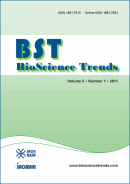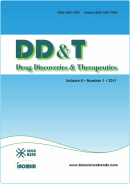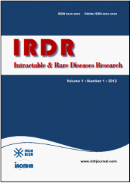Intractable Rare Dis Res. 2018;7(1):46-50. (DOI: 10.5582/irdr.2017.01079)
The ratio of urinary α1-microglobulin to microalbumin can be used as a diagnostic criterion for tubuloproteinuria.
Zhang HW, Wang F, Xiao HJ, Yao Y
Low-molecular-weight proteinuria is one of the characteristic clinical manifestations of renal tubular and interstitial diseases. Low-molecular-weight proteinuria is defined as excessive urinary loss of α1-microglobulin, β2-microglobulin, or other low-molecular-weight plasma proteins. The current study examined the ratio of urinary α1-microglobulin to microalbumin in 24 Chinese pediatric patients with renal tubular and interstitial diseases, including 10 patients with Dent disease, 2 patients with Lowe syndrome, 6 patients with acute tubulointerstitial nephritis (ATIN), 4 patients with acute tubulointerstitial nephritis with uveitis syndrome (TINU), and 2 patients with nephronophthisis (NPHP). Patients with steroid-sensitive nephrotic syndrome, IgA nephropathy, Henoch-Schonlein purpura nephritis, or lupus nephritis served as control groups. In all of the patients with tubular and interstitial disease, urinary α1-microglobin increased 10-300-fold above the upper limit of the normal range, the ratio of urinary α1-microglobulin to microalbumin was greater than 1, and the percentage of low-molecular-weight plasma proteins (LMWP) in urine was greater than 50% according to urine protein electrophoresis. There was close correlation between the ratio of urinary α1-microglobulin to microalbumin and the percentage of LMWP in urine according to urine protein electrophoresis (r = 0.797, p = 0.000). We suggested firstly that the ratio of urinary α1-microglobulin to microalbumin, greater than 1, can be used as a diagnostic criterion for tubuloproteinuria.







